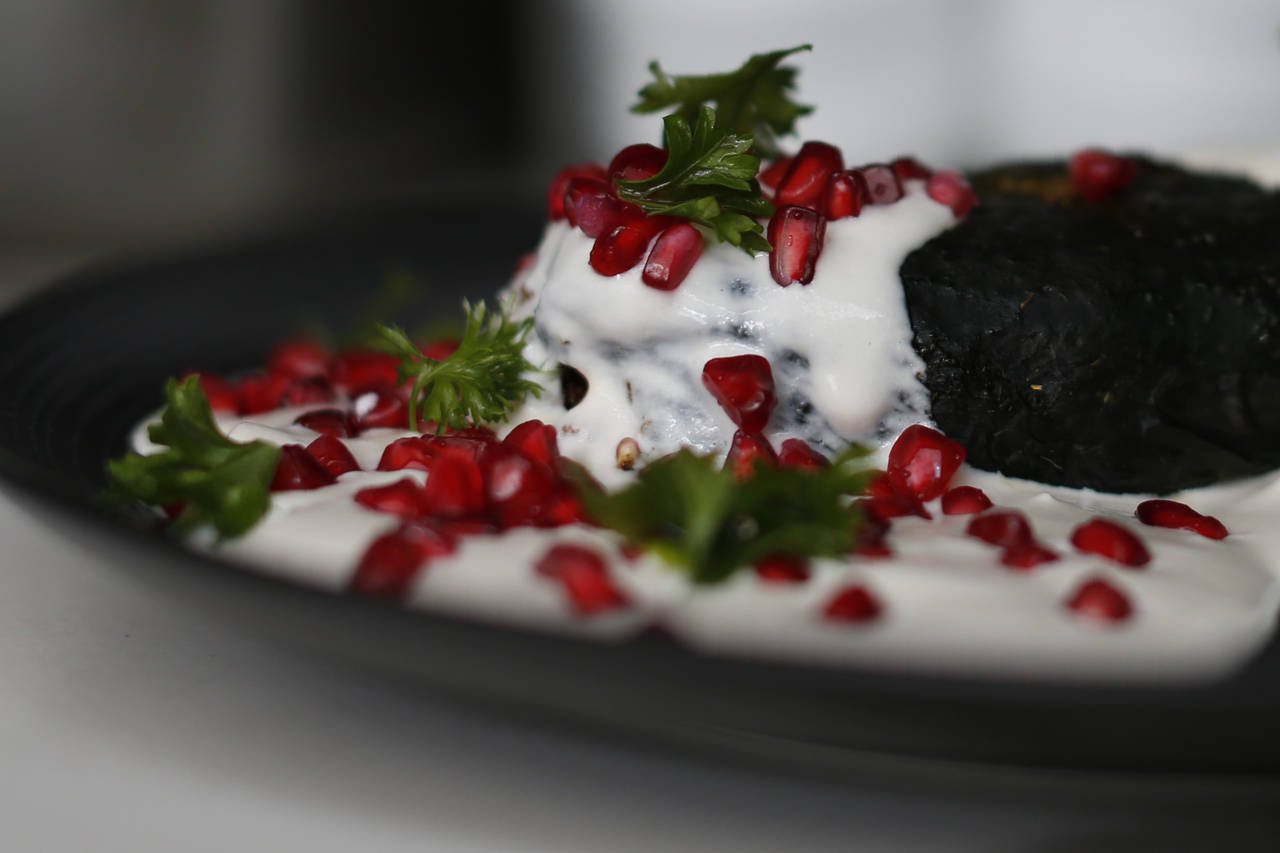Mexico nuns’ culinary innovations live on in storied cuisine
Sep 29, 2022, 5:56 PM | Updated: Sep 30, 2022, 6:34 am

FILE - A chile en nogada sits ready to be delivered to a diner at the Arango restaurant in Mexico City, Aug. 26, 2019. Chiles en nogada is a seasonal dish of mild poblano peppers stuffed with ground pork and fruit, smothered in a sauce of walnut, parsley and pomegranate seeds. The recipe was invented in 1821 by a nun, whose name has been lost to history. (AP Photo/Rebecca Blackwell, File)
(AP Photo/Rebecca Blackwell, File)
PUEBLA, Mexico (AP) — Each September, when Mexico celebrates its independence from Spain, people nationwide delight in chiles en nogada, a seasonal dish of mild poblano peppers stuffed with ground pork and fruit, smothered in a sauce of walnut, parsley and pomegranate seeds. The recipe was invented in 1821 by a nun, whose name has been lost to history.
Agustín de Iturbide, a general in the War of Independence, was the first to taste one. Traveling from the Gulf Coast state of Veracruz, he made a stop in Puebla where the nuns of the Santa Monica convent surprised him with the new creation. Its vivid green, white and red visually evoked the colors of Mexico’s national flag, and it remains synonymous with Independence Day celebrations today.
The story illustrates how cloistered nuns left an anonymous but indelible print on Mexican cuisine over the centuries, dreaming up some of the country’s most iconic dishes when called upon to serve special meals for important men while remaining unnamed and out of sight to the world.
“There were more than 300 recipes created by nuns, but that’s not very well known because it’s almost never mentioned,” said Jesús Vázquez, a historian with the Santa Rosa art museum in Puebla, housed in a former convent that was the birthplace of another iconic delectable: mole poblano.
A hundred years before Iturbide’s mouth watered over chiles en nogada, a nun at Santa Rosa invented the thick brown mole sauce, which is often served over turkey or chicken. It takes days to prepare and contains more than 20 ingredients, from chocolate to peanuts to a variety of chiles deveined to reduce the spiciness.
“The most outstanding recipes are from nuns, and we ask ourselves: Why is that? Out of necessity,” said Sister Caridad, 36, speaking with admiration of her predecessors at Santa Monica who created chiles en nogada. “To seek sustenance every day, God inspired them to invent such exquisite recipes.”
The order of Augustinian Recollects at Santa Monica and the Dominicans of Santa Rosa are cloistered nuns, which means that by taking the habit, they renounce outside life and will live at their convent until death. Historically the women obeyed vows of silence, obedience and austerity, sleeping on wooden boards instead of beds, wearing itchy wool clothing and with no windows through which to see the outside world.
The nuns were not allowed to eat what they cooked, because fasting was supposed to purify their bodies and keep their lives austere. Nor could they even see the faces of those who tried their mole or chiles en nogada; they left the meals on a rotating table with a door for it to be picked up from the outside.
Vázquez, the historian, said those kitchens “were laboratories of gastronomic experiments” where nuns used simple tools and fused pre-Hispanic and European ingredients to create revolutionary new flavors.
In the case of chiles en nogada, at first the nuns made something similar only with just fruit, as a dessert, because meat was scarce. As pork became more widely available, they began to play round with mixing sweet and savory, and it evolved into the dish that has endured to this day.
Chiles en nogada have long since passed from the sole purview of the Santa Monica nuns to be prepared and savored nationwide and abroad. Another convent in Puebla makes them, too: Each August the 17 Carmelite nuns of La Soledad prepare around 250 chiles en nogada to sell.
Year-round, however, La Soledad is best known for its nuns’ specialty, desserts. Those include polvorones, crumbly cookies made from flour, butter and sugar; orange donuts; anise-covered sweets; and the most popular, crunchy oval cookies known as campechanas. All are served up to the public through a privacy-maintaining rotating device similar to the ones used in the time of Iturbide.
“This community is very traditional in terms of gastronomy,” said Sister Elizabeth, one of La Soledad’s residents. “All of our cookies, chocolates and eggnog are made by hand, without mixers, with saucepans, as was done in the old days.”
The campechanas are resold at a nearby coffee shop. Sister Elizabeth acknowledged some frustration at the thought that the nuns may not get the credit, but said she takes solace in knowing that only they know the recipe and can make the golden confections.
The Augustinian Recollects settled in the late 17th century at the Santa Monica convent in Puebla’s colonial center, one of 11 built in the city. As part of laws separating church and state, the nuns left that site in 1934 and now reside in a modest building nearby with yellow walls and a green garden. The 20 women who live there dedicate all their waking hours, from 6 a.m. to 10 p.m., to surrendering to God.
Sister Caridad said the nuns become integrated like family and come to share a common heritage. There’s no need for recipe books, she added — their culinary secrets are passed from generation to generation.
Eighteen years of confinement has not been easy, but she takes pride in monastic life.
“Because of my sacrifices I may not have some satisfactions in this world,” she said. “But I know that one day God will provide those to us because of what we did in this cloister, in this house where we were hidden, for how much good we did for humanity.”
___
Associated Press religion coverage receives support through the AP’s collaboration with The Conversation US, with funding from Lilly Endowment Inc. The AP is solely responsible for this content.
Copyright © The Associated Press. All rights reserved. This material may not be published, broadcast, rewritten or redistributed.

















